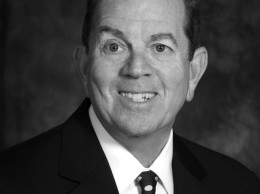Op/ed: The leadership of Pope Francis
By R. Scott Turicchi
Much has been made about the style of Pope Francis — specifically that he doesn’t act like a pope.
So, what in fact is leadership? In his book, “An Integrative Theory of Leadership,” Martin Chemers defines leadership as “a process of social influence in which one person is able to enlist the aid and support of others in the accomplishment of a common task.”
Unlike the CEO of a corporation, the Holy Father has the challenge of leading the whole world, broken down into several distinct groups: 1) His fellow bishops; 2) the internal bureaucracy of the Church (curia); 3) priests and religious figures; 4) lay Catholics from differing cultures; 5) non-Catholic Christians who look to the papacy for moral authority in an increasingly chaotic world; and 6) the rest of the world, which does not necessarily regard him as its leader.
The key to understanding Pope Francis and his view of this task is found in the first few paragraphs of his Apostolic Exhortation Evangelii Gaudium: “I invite all Christians, everywhere, at this very moment, to a renewed personal encounter with Jesus Christ, or at least an openness to letting Him encounter them; I ask all of you to do this unfailingly each day.”
I believe that Pope Francis sees his role as pointing the way to this encounter and eliminating any obstacles leading to this encounter. We know from the Gospels that encountering Christ changed many lives instantly — think of the Apostles, especially the dramatic conversion of the tax collector, St. Matthew.
The reason that Pope Francis seems different as a pope is that he is saying with his actions that it is not the pope alone who should make the presence of God felt in the world but each one of us. It is a collective responsibility. He is demonstrating for us that the long teaching and implementation era of Vatican II is coming to a close. After the papacies of St. John XXIII and soon to be Blessed Paul VI — the popes of the Council — the Church had the teaching popes of St. John Paul II and Benedict XVI who gave the Council’s teaching its proper philosophical and theological underpinnings. Pope Francis is distilling this 50-year history into a visible message that can resonate to each of the groups above.
There are numerous examples of how he is leading by example in his 19-month papacy beginning with his personal style to eschew the papal apartments, the red shoes and the gold pectoral cross. We could also look to the institutional changes that he is making which should make the Church more transparent to the world and more pastoral in its outreach.
But the most powerful images that he produces are in his outreach to the disenfranchised.
When my family was last in Rome, we had the privilege of being at the Wednesday General Audience on April 30. As usual, at the end of the audience, there are many people — including dignitaries, invited guests and recently married couples— for the Holy Father to greet who were positioned near the dais.
After greeting the cardinals and bishops present, Pope Francis walked down the steps leading to the main square. In this area there were several hundred sick or disabled people. For more than an hour, he greeted, spoke to and blessed each sick person. All of the VIP’s had to wait until he finished his encounter with the sick, which was no less than his encounter with Christ.
This form of leadership hearkens back to the first pope, Peter, who said “Be shepherds of God’s flock that is under your care, watching over them…eager to serve; not lording it over those entrusted to you, but being examples to the flock.” (1 Peter 3:2-3)
• R. Scott Turicchi is the president and chief financial officer of Los Angeles-based cloud computing firm j2Global. He is also the chairman of the board of governors of Thomas Aquinas College, a Catholic liberal arts college in Santa Paula.











